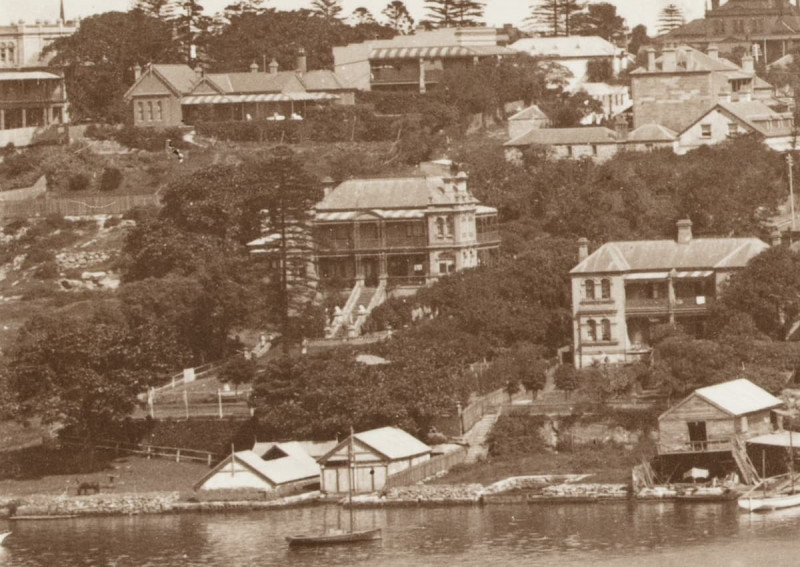In 1844 ship chandler and sailmaker George Linley Robinson built his stone house on Blackwattle Bay, close to his soap manufacturer brother Richard who lived up the hill in Guildford Lodge. Reached by a circular drive and fronted by a dramatic staircase and verandah, Llangollen comprised four bedrooms, dining and drawing rooms, servants’ quarters and wine cellars. In the grounds were a jetty, coach house and stables, fowl yard, flower and vegetable garden, and a well drawing fresh spring water. Added later were more rooms, croquet and tennis courts, swimming baths and a boatshed, cowsheds and an orchard.
The Robinsons soon vacated for their daughter Agnes and son-in-law Michael Metcalfe, a Customs House agent involved with the Church of England Cemetery Company which sold plots in Camperdown’s St Stephen’s Church graveyard. After the Metcalfes relocated to St Peters, Llangollen was rented out by chemist Charles Marcian Penny and his descendants. Occupants included woolbroker Octavius Bayliffe Ebsworth, the Ainsworth family of ironmongers, land estate agent Henry Edward Vaughan, and architect Ambrose Thornley jnr who designed Glebe Town Hall.
Passed in at auction in 1880, Llangollen was purchased in 1893 by William Paul Featherstone who moved in after sailing from New Zealand on his own steam-yacht. His daughter Faire ran wartime fundraising fetes with spinning jennies in the grounds, afternoon tea on the terrace and continuous concerts in the drawing room. Hand-painted angels graced the house’s ceilings.
In 1918 Llangollen was converted into Anderson House, a hostel for country girls training to be teachers at Hereford House. Amenities included bedrooms with balconies, sitting room, study, laundry and a dining room with a waitress in attendance. After the college stopped taking students in 1932 “Ando” closed. Surrounded by timber yards, the building was demolished in the 1940s.



